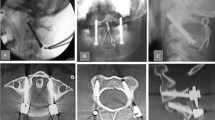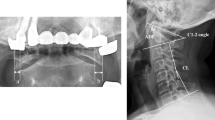Abstract
Purpose of Review
We will review the recent literature concerning the necessity of supplemental fusion to spinal instrumentation and discuss if temporal spinal fixation is a viable option for the treatment of unstable spine fractures. Advancements in minimally invasive techniques offer an alternative approach to traditional open stabilization for unstable spine fractures. The use of minimally invasive surgery offers many advantages concerning operative morbidly; fusion is not utilized and instrumentation can be removed in a delayed fashion.
Recent Findings
There are limited differences in amount of correction loss over time, and multiple studies report equivocal to superior results in patient’s functional outcomes when comparing temporary internal stabilization to long segment instrumentation with fusion. Removal of implants can restore segmental motion.
Summary
Review of the literature demonstrates that temporary internal stabilization for unstable fractures is a viable option. Close clinical and radiographic follow-up is recommended to avoid delayed spinal deformity.

Similar content being viewed by others
References
Papers of particular interest, published recently, have been highlighted as: • Of importance •• Of major importance
Hu R, Mustard CA, Burns C. Epidemiology of incident of spinal fractures in a complete population. Spine. 1996;21:492–9.
Leucht P, Fishcer K, Muhr G, Mueller. Epidemiology of traumatic spine fractures. Injury. 2009;40:166–72.
Denis F. The three column spine and its significance in the classification of acute thoracolumbar spinal injuries. Spine. 1983;8:817–31.
Vaccaro A, Lehman R, Hurlbert R, et al. A new classification of thoracolumbar injuries: the importance of injury morphology, the integrity of the posterior ligamentous complex, and neurologic status. Spine. 2005;30(20):2325–33.
Aebi, M. Thalgott J, Webb J. AO ASIF Principles in Spine Surgery. Springer. 1988:20–41.
Hitchon P, Torner J, Haddad S, Follett K. Management options in thoracolumbar burst fractures. Surg Neurol. 1998;49:619–26.
Bailey C, Dvorak M, Thomas K, Boyd M, Paquett S, Kwon B, France J, Gurr K, Bailey S, Fisher C. Comparison of the thoracolumbosacral orthosis and no orthosis for the treatment of thoracolumbar burst fractures: interim analysis of a multicenter randomized clinical equivalence trial. J Neurosurg, Spine. 2009;11(3):295–303.
Wood K, Butterman G, Mehbod A, Garvey T, Jhanjee R, Sechriest V. Operative compared with nonoperative treatment of a thoracolumbar burst fracture without neurological deficit. J of Bone Joint Surg Am. 2003;85(5):773–81.
Gillespie KA, Dickey JP. Biomechanical role of lumbar spine ligaments in flexion and extension: determination using a parallel linkage robot and a porcine model. Spine. 2004;29:1208–16. doi:10.1097/00007632-200406010-00010.
McAfee PC, Yuan HA, Fredrickson BE, Lubicky JP. The value of computed tomography in thoracolumbar fractures. An analysis of one hundred consecutive cases and a new classification. J Bone Joint Surg Am. 1983;65:461–73.
Benson DR, Burkus JK, Montesano PX, Sutherland TB, McLain RF. Unstable thoracolumbar and lumbar burst fractures treated with the AO fixateur interne. J Spinal Disord. 1992;5:335–43.
Kim BG, Dan JM, Shin DE. Treatment of thoracolumbar fracture. Asian Spine J. 2015;9(1):133–46.
Roy-Camille R, Demeulenaere C. Osteo- synthese du rachis dorsal, lombaire et lombosacree par plaque metalliques vissees dans les pedicles vertebraux et les apophyses articulaires. Presse Med. 1970;78:1447–8.
Roy-Camille R, Sailant G, Berteaux D, Salgodo V. Osteosynthesis of thoracolumbar spine fractures with metal plates screwed through the vertebral pedicles. ReconstrSurgTraumatol. 1976;15:2.
Fourney DR, Dettori JR, Norvell DC, Dekutoski MB. Does minimal access tubular spine surgery increase or decrease complications in spinal decompression or fusion? Spine. 2010;35(9S):S57–65.
O’Tool JE, Eichholz KM, Fessler RG. Surgical site infections rates after minimally invasive spinal surgery. J Neurosurg Spine. 2009;11:471–6.
Arts M, Brand R, van der Kallen B, Nijeholt GL, Peul W. Does minimally invasive lumbar disc surgery result in less muscle injury than conventional surgery? A randomized controlled trial. Eur Spine J. 2011;20(1):51–7.
• Zhao QM, Gu XF, Yang HL, Liu ZT. Surgical outcome of posterior fixation, including fractured vertebra, for thoracolumbar fractures. Neurosciences. 2015;20(4):362–267. Recent review article that reviews the treatments and outcomes of spinal fractures
•• Chou PH, Ma HL, Wang ST, et al. Fusion may not be a necessary procedure for surgically treated burst fractures of the thoracolumbar and lumbar spines: a follow-up of at least ten years. J Bone Joint Surg Am. 2014;96:1724–31. Prospective randomized trial with at least 10-year follow-up. No statistically significant differences in clinical or radiographic outcomes in patients receiving temporary stabilization versus fusion
• Jeon CH, Lee HD, Lee YS, Seo JH, Chung NS. Is it beneficial to remove the pedicle screw instrument after successful posterior fusion of thoracolumbar burst fractures? Spine (Phila Pa 1976). 2015;40(11):E627–33. doi:10.1097/BRS.0000000000000870. Recent prospective study that argues that patient had improved clinical outcome once the instrumentation is removed?
• Kim Y-M, Kim D-S, Choi E-S, Shon HC, Park KL, Cho BK, Jeong JJ, Cha YC, Park JK. Nonfusion method in thoracolumbar and lumbar spinal fractures. Spine. 2011;36(2):170–6. All patients in this study had documented posterior-ligamentous-complex disruption and underwent temporary stabilization with good clinical results
•• Kim HS, Kim SW, Ju C, Wang HS, Lee SM, Kim DM. Implant removal after percutaneous short segment fixation for thoracolumbar burst fracture: does it preserve motion. J Korean Neurosurg Soc. 2014;55:73–7. Recent article that supports maintained spinal mobility after instrumentation is removed
• Axelsson P, Stromqvist B. Can implant removal restore mobility after fracture of the thoracolumbar segment? Acta Orthop. 2016;87(5):511–5. Prospective study that documents preserved spinal mobility once implants are removed
• Toyone T, Ozawa T, Inada K, Shirahata T, Shiboi R, Watanabe A, et al. Short-segment fixation without fusion for thoracolumbar burst fractures with neurological deficit can preserve thoracolumbar motion without resulting disc degeneration. Spine. 2013;38:1482–90. Study with 10-year follow-up that showed that segmental motion was maintained in flexion/extension after hardware removal
Baaj AA, Reyes PM, Yaqoobi AS, et al. Biomechanical advantage of the index-level pedicle screw in unstable thoracolumbar junction fractures. Journal of Neurosurgery. Spine. 2011;14:192–7.
Tezeren G, Kuru I. Posterior fixation of thoracolumbar burst fracture: short-segment pedicle fixation versus long-segment instrumentation. J Spinal Disord Tech. 2005;18:485–8.
• Kocanli O, Komur B, Duymus TM, Giclu B, Yilmaz B. Ten-year follow-up results of posterior instrumentation without fusion for traumatic thoracic and lumbar spine fractures. J Orthop. 2016;13:301–5. Recent article that showed that the loss of correction concerning segmental kyphosis and vertebral angle are no different between temporary stabilization and fusion
• Jindal N, Sankhala SS, Bachhal V. The role of fusion in the management of burst fractures of the thoracolumbar spine treated by short segment pedicle screw fixation. J Bone Joint Surg Br. 2012;94-B:1101–6. Article questions the role of fusion in the treatment of spinal fractures
Bresnahan L, Ogden AT, Natarajan RN, Fessler RG. A biomechanical evaluation of graded posterior element removal for treatment of lumbar stenosis: comparison of a minimally invasive approach with two standard laminectomy techniques. Spine (Phila Pa 1976). 2009;34:17–23.
•• Wang ST, Ma H-L, Liu C-L, Yu WK, Chang MC, Chen TH. Is fusion necessary for surgically treated burst fractures of the thoracolumbar and lumbar spine?: a prospective randomized study. Spine. 2006;31(23):2646–52. First article to question the need to fusion for the treatment of burst fractures
•• Cui S, Busel GA, Puryear AS. Temporary pedicle screw stabilization without fusion of adolescent thoracolumbar spine fractures. J Pediatr Orthop. 2016;36(7):701–8. Recent article that use temporary stabilization without fusion in fractures with ligamentous disruption
Lindsey R, Dick W, Nunchuck S, Zach G. Residual intersegmental spinal mobility following limited fixation of thoracolumbar spine fractures with the fixateur interne. Spine. 1993;18(4):474–8.
Akbarnia BA, Crandall DG, Burkus K, Matthews T. Use of long rod and short arthrodesis for burst fractures of the thoracolumbar spine. A long-term follow up study. Journal of Bone and Joint Surgery-Series A. 1994;76(11):1629–35.
Spiegl UJ, Jarvers JS, Glasmacher S, Heyde CE, Josten C. Release of moveable segments after dorsal stabilization: Imapct of affected disc. Unffallchirug. 2016;119(9):747–54.
Gnanenthiran SR, Adie S, Harris IA. Non-operative versus operative treatment for thoracolumbar burst fractures without. Clinical Orthop Relate Re. 2012;470:567–77.
Alpert HW, Farley FA, Caird MS, Hensinger RN, Li Y, Vanderhave KL. Outcomes following removal of instrumentation after posterior spine fusion. J Pediatr Orthop. 2014;34(6):613–7. doi:10.1097/BPO.0000000000000145.
Ak H, Gulsen I, Atalay T, Gencer M. Does the removal of spinal implants reduce back pain? J Clin Med Res. 2015;7(6):460–3. doi:10.14740/jocmr2141w.
Tian NF, Wu YS, Zhang XL, Wu XL, Chi YL, Moa FM. Fusion versus nonfusion for surgically treated thoracolumbar burst fractures: a meta-analysis. PLoS One. 2013;8(5):e63995. doi:10.1371/journal.pone.0063995.
Buser Z, Brodke DS, Youssef JA, Meisel HJ, Myhre SL, Hashimoto R, Park JB. Tim Yoon, Wang JC. Synthetic bone graft versus autograft or allograft for spinal fusion: a systemic review. J Neurosur Spine. 2016;25(4):509–16.
Cimatti M, Forcato S, Polli F, Miscusi M, Frati A, Raco A. Pure percutaneous pedicle screw fixation without arthrodesis of 32 thoraco-lumbar fractures: clinical and radiological outcome with 36-month follow-up. Eur Spine J. 2013;22(Suppl 6):S925–32.
Tezeren G, Bulut O, Tukenmez M, Ozturk H, Oztemur Z, Ozturk A. Long segment instrumentation of thoracolumbar burst fracture: fusion versus nonfusion. J Back Musculoskelet Rehabil. 2009;22(2):107–12.
Kato S, Chikuda H, Ohya J, Oichi T, Matsu H, et al. Risk of infectious complications associated with blood transfusion in elective spine surgery—a propensity score matched analysis. Spine Journal. 2016;16(1):55–60.
Seicean A, Alan N, Seican S, Neuhauser D, Weil RJ. The effect of blood transfusion on short-term, perioperative outcomes in elective spine surgery. J Clin Neurosci. 2014;21(9):1579–85.
Chang HG, Kim YW, Jung JC, Kim HS, Lee KB. Preliminary report of temporary posterior instrumentation in stable thoracolumbar burst fractures. J Korean Soc Spine Surg. 2002;9(4):364–73.
Cox JB, Yang M, Jacob RP, et al. Temporary percutaneous pedicle screw fixation for treatment of thoracolumbar injuries in young adults. J Neurol Surg A Cent Eur Neurosurg. 2013;74:7–11.
Gardner VO, Armstrong GW. Long-term lumbar facet joint changes in spinal fracture patients treated with Harrington rods. Spine. 1990;15:479–84.
Author information
Authors and Affiliations
Corresponding author
Ethics declarations
Conflict of interest
Aaron P Dansion and Darrin Lee declare that they have no conflict of interest. Ripul Panchal reports personal fees from Baxter, grants and personal fees from Globus, personal fees from GS Medical, personal fees from Medtronic, personal fees from MizuhoOSI, personal fees from Precision Spine, grants from SpineGuard, and personal fees from ZimmerBiomet, outside the submitted work.
Human and animal rights and informed consent
This article does not contain any studies with human or animal subjects performed by any of the authors. With regard to the authors’ research cited in this paper, all procedures were followed in accordance with the ethical standards of the responsible committee on human experimentation and with the Helsinki Declaration of 1975, as revised in 2000 and 2008. All institutional and national guidelines for the care and use of laboratory animals were followed.
Additional information
This article is part of the Topical Collection on Motion Preserving Spine Surgery
Rights and permissions
About this article
Cite this article
Danison, A.P., Lee, D.J. & Panchal, R.R. Temporary stabilization of unstable spine fractures. Curr Rev Musculoskelet Med 10, 199–206 (2017). https://doi.org/10.1007/s12178-017-9402-y
Published:
Issue Date:
DOI: https://doi.org/10.1007/s12178-017-9402-y




